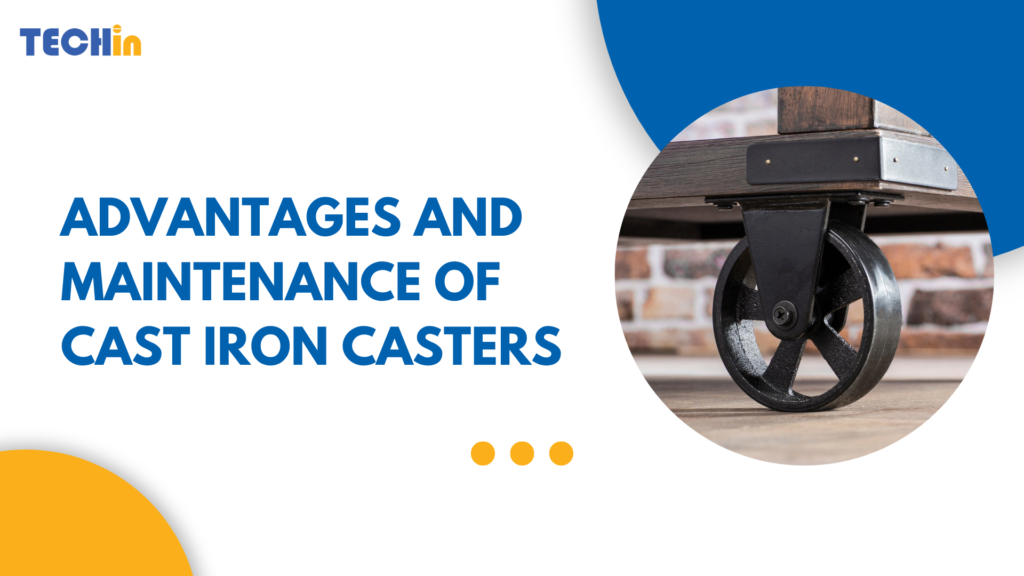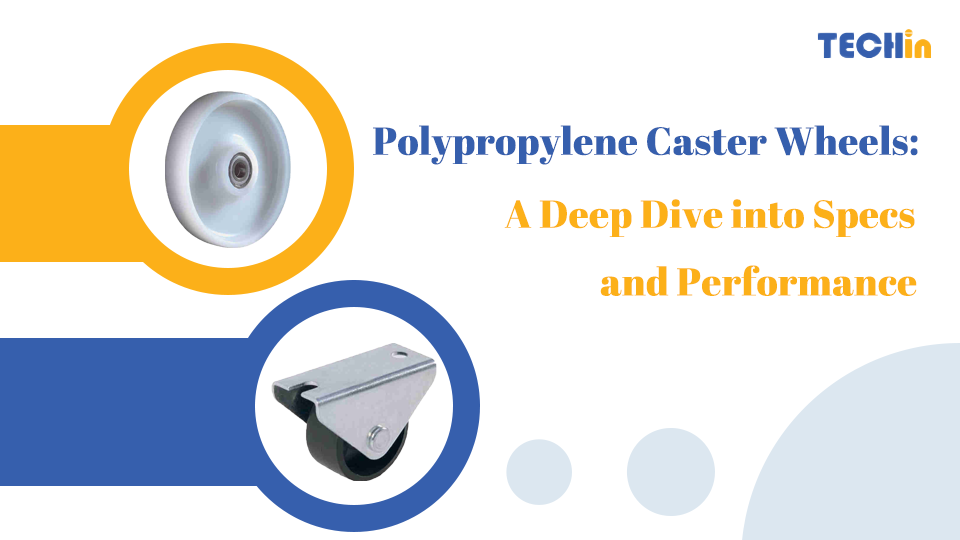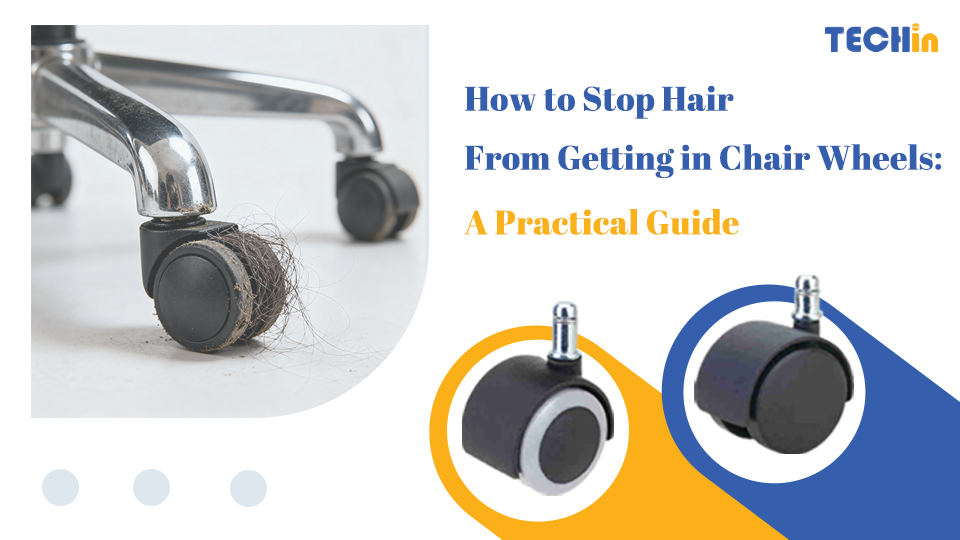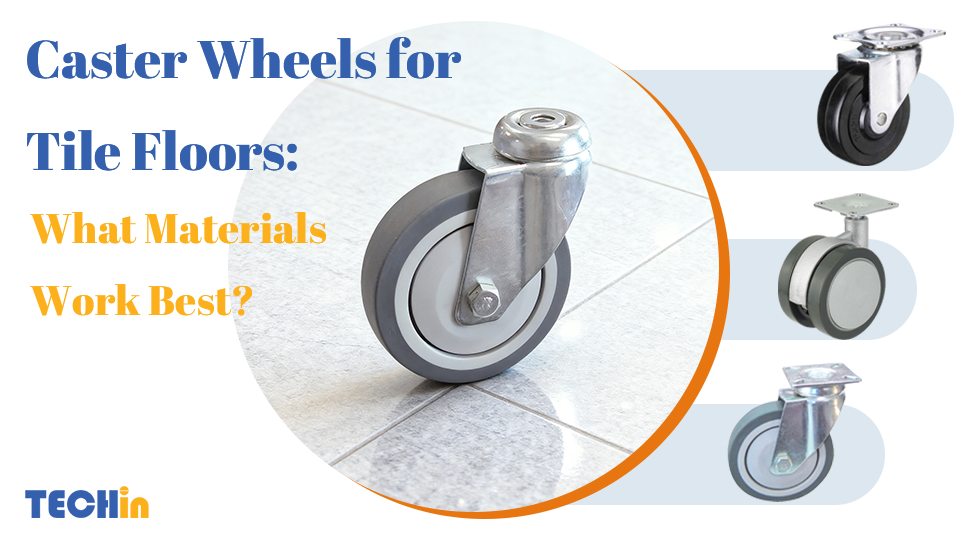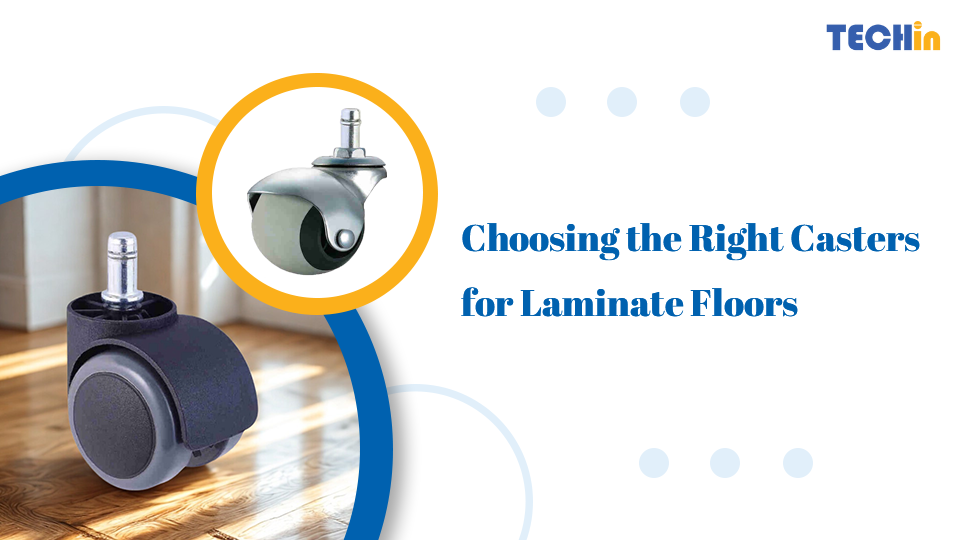Cast iron casters are highly sought after for their strength, durability, and classic industrial look. Whether you need to move heavy equipment in a factory or add a touch of vintage style to your home decor, cast iron casters are both functional and fashionable. In this article, we’ll look at the advantages of cast iron casters, how to take care of them, and how they can be used in a variety of applications.
Cast iron casters are perfect for heavy duty applications because they can handle a lot of weight, are resistant to impact and heat, and are extremely durable. They are a long-term solution, which means you won’t have to replace them as often, and that saves you money on maintenance.
In this article, we’ll dive into the benefits, uses, maintenance, and decorative appeal of cast iron casters.
What Are Cast Iron Casters?
Cast iron casters are wheels made from cast iron, a robust alloy primarily composed of iron, carbon, and silicon. Cast iron’s unique composition gives it high compressive strength and hardness, making it an ideal material for applications that require durability and resistance to deformation. Cast iron casters are commonly installed on equipment and machinery that require mobility but must also bear substantial weight without risk of breaking or bending.
These casters are known for their solid construction, often with a thick wheel body that can handle heavy loads. Unlike rubber or plastic wheels, which might warp or break under extreme pressure, cast iron casters remain stable and resilient, providing a reliable base for industrial equipment.
Key Characteristics of Cast Iron Casters
- High Compressive Strength: Cast iron casters support heavy loads without deformation, making them ideal for industrial use.
- Durability: Cast iron withstands harsh conditions, from high-impact floors to extreme heat, with minimal wear.
- Low Rolling Resistance: The solid surface of cast iron casters offers lower resistance, making it easier to move heavy loads once in motion.
Cast iron casters are typically used in environments that demand high load-bearing capacities and minimal maintenance, as they continue to perform under stress without significant wear.
Advantages of Cast Iron Casters
1. High Load Capacity
A standout feature of cast iron casters is their load-bearing capability. Cast iron can bear substantial weight without bending, warping, or breaking, which is essential in settings like warehouses and factories where large and heavy equipment needs to be mobile. The high load capacity of cast iron casters means they can support equipment that would otherwise damage softer wheels. This strength makes them a popular choice for applications that involve machinery, pallets, or storage racks.
2. Heat and Impact Resistance
Cast iron has a high melting point, allowing these casters to operate in high-temperature environments, such as foundries or metalworking facilities. Unlike rubber, which can soften or deform under heat, cast iron retains its structure, even when exposed to hot surfaces or friction. Additionally, cast iron casters are impact-resistant, handling physical shocks from bumpy surfaces, dropped loads, or sudden stops without damage.
3. Durability and Longevity
Cast iron casters offer a long lifespan due to their natural wear resistance. Unlike materials that degrade over time, cast iron can withstand prolonged use, heavy loads, and challenging conditions without losing functionality. Their durability minimizes the need for replacements, making them a cost-effective option in high-traffic environments where wheels endure frequent use and heavy weights.
4. Low Maintenance Requirements
Because of their resilience to environmental stressors like humidity, heat, and physical abrasion, cast iron casters require less frequent maintenance than softer materials. With proper initial installation, these casters continue to perform over time with minimal need for upkeep. Their low maintenance requirements translate into operational cost savings and reduced downtime.
Disadvantages of Cast Iron Casters
While cast iron casters excel in durability and strength, they come with some limitations:
1. Noise Levels
One of the most common drawbacks of cast iron casters is noise. When rolling over hard surfaces, cast iron creates more sound than rubber or polyurethane wheels. This noise can be disruptive, especially in enclosed or quiet spaces. The solid, unyielding nature of cast iron amplifies sound as it moves, which can be a drawback in environments where silence is necessary.
2. Impact on Flooring
Cast iron casters are tough on flooring due to their rigidity. They can cause scratches, scuff marks, and even cracks on softer surfaces like wood or vinyl. This means that while they’re well-suited for concrete or industrial floors, they may not be ideal in settings with delicate or polished floors. Protective mats or reinforced flooring are often recommended to mitigate damage.
3. Limited Flexibility and Shock Absorption
Unlike rubber or polyurethane, cast iron does not compress or absorb shocks. This lack of flexibility means that cast iron casters are less forgiving on uneven surfaces, where they might result in a jarring ride. In applications requiring smooth movement, alternative materials with shock-absorbing properties may be more suitable.
Main Uses of Cast Iron Casters
Thanks to their heavy-duty construction, cast iron casters are used in various industrial and commercial applications:
1. Manufacturing Facilities
Manufacturing plants rely on cast iron casters to transport equipment and materials across the production floor. The load-bearing strength and stability of cast iron make it indispensable in these settings, allowing heavy machinery, raw materials, and products to be moved safely and efficiently.
2. Warehouses and Distribution Centers
In warehouses, cast iron casters play a vital role in moving inventory, particularly large pallets and storage racks. Their capacity to handle heavy loads without deformation ensures that products are transported securely. Additionally, their durability makes them ideal for the constant movement in high-traffic warehouse environments.
3. Construction Sites
Construction sites involve rugged conditions and heavy equipment, where cast iron casters provide the necessary resilience. They are used on scaffolding, tool carts, and other movable equipment, withstanding impacts from rough surfaces and carrying tools and materials reliably across uneven terrain.
4. Automotive and Aerospace Industries
The automotive and aerospace sectors utilize cast iron casters to transport engines, mechanical components, and assembly parts. These industries demand casters that can support substantial weights without compromising stability, which makes cast iron an ideal choice for moving large parts or tools.
5. Retail and Commercial Displays
In retail environments, cast iron casters add a vintage, industrial touch to furniture and display fixtures. Their robust appearance and weight-bearing ability allow retailers to incorporate them into heavy displays and shelving units, providing both style and functionality.
How to Maintain Cast Iron Casters for Longevity
Despite their low maintenance requirements, regular upkeep of cast iron casters can extend their lifespan and maintain peak performance. Here’s how to properly care for them:
1. Regular Cleaning and Lubrication
To keep cast iron casters functioning smoothly, clean them regularly to remove dirt, dust, and debris that can accumulate and impede movement. Use a mild detergent solution to wipe down the wheels, and avoid acidic cleaners that may damage the metal. Lubricate the swivel and bearing areas periodically to reduce friction, particularly in high-use environments where casters are in constant motion.
2. Inspection and Hardware Checks
Routine inspection is essential to identify any signs of wear or damage, such as cracks, chips, or loose fasteners. Tighten any loose bolts and ensure that the swivel mechanism is functioning correctly. If any parts show excessive wear, replace them promptly to prevent caster failure. Regular checks help catch small issues before they lead to significant repairs or replacements.
3. Protective Measures for Harsh Environments
In environments with high humidity or corrosive elements, it’s wise to apply a protective coating to cast iron casters. Rust-resistant paint or a sealant can help shield the casters from moisture and prevent corrosion. For outdoor or corrosive environments, consider using rust-resistant lubricants to protect the caster mechanism and ensure long-term functionality.
Comparing Cast Iron Casters to Other Materials
When selecting casters, it’s helpful to compare the properties of various materials to understand where cast iron shines:
- Aluminum: Lightweight and easy to maneuver, aluminum casters are better suited for applications requiring mobility but with lower weight demands. However, they lack the durability and load capacity of cast iron.
- Rubber: Rubber casters offer quiet operation and are gentle on floors, absorbing shocks and rolling smoothly. They are ideal for environments that require noise reduction and cushioning but may not withstand heavy loads or rough conditions as effectively as cast iron.
- Forged Steel: Stronger and more durable than cast iron, forged steel casters provide excellent impact resistance and higher load-bearing capabilities. However, they are typically more expensive, making them suitable for specialized heavy-duty applications where cast iron may be insufficient.
Each material has specific strengths and limitations, with cast iron remaining a popular choice for applications demanding high load capacity, durability, and minimal maintenance.
Tips for Selecting the Right Caster Wheel for Heavy-Duty Applications
When choosing cast iron casters, keep the following considerations in mind:
- Load Capacity: Verify that the caster’s weight rating aligns with the equipment’s load requirements. Overloading can lead to failure, so always choose casters rated to handle more weight than the anticipated load.
- Flooring Surface: Cast iron casters are best suited to hard, flat surfaces like concrete. On softer floors, they may cause damage, so consider protective coverings or mats to prevent scuffing and cracking.
- Environmental Factors: If used outdoors or in corrosive environments, select cast iron casters with protective coatings or corrosion-resistant features to enhance durability and prevent rust.
By assessing these factors, you can select the most appropriate caster for your specific needs, ensuring long-term, reliable performance.
Conclusion
Cast iron casters are incredibly durable, can handle a lot of weight, and require very little maintenance, which makes them a great asset in industrial applications. If you take care of them, they will last a long time and give you great performance in situations where you need something strong and stable. Plus, they look really cool and have a classic, industrial style that works well in vintage decor, adding a unique, timeless look to your home or business.
People Also Ask
Are Cast Iron Casters Suitable for Vintage Decor?
Yes, cast iron casters are popular in vintage and industrial-style decor. Their rugged, antique look adds character to furniture, such as tables, shelves, and carts, giving them a timeless, old-world charm. Many designers and DIY enthusiasts incorporate cast iron casters into projects to create an authentic, rustic aesthetic while also adding functionality.
Will Cast Iron Casters Damage Floors?
Due to their hard, rigid structure, cast iron casters can damage softer floors like wood, vinyl, or tile. They may cause scratches, scuff marks, or even cracks on delicate surfaces. To prevent floor damage, consider using protective mats, or install these casters on concrete or other hard surfaces where durability is prioritized over floor aesthetics.
How Much Weight Can Cast Iron Casters Support?
Cast iron casters are known for their high load-bearing capacity and can support significant weights, making them ideal for industrial and heavy-duty applications. The specific weight limit depends on the caster’s size and design, but generally, cast iron casters can handle loads from several hundred to thousands of pounds, depending on the model and manufacturer specifications.

